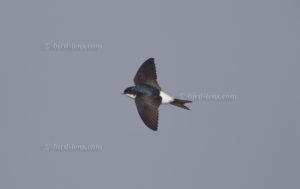 You could read in May several times in the media that there were fewer Common Swifts (Apus apus) and Northern House-Martins (Delichon urbica) this year than in previous years. For example, a conservation organization reported on the results of the “Stunde der Gartenvogel”, which is equivalent the RSPB Big Garden Birdwatch number of these fast-flying insectivores declined by 40% less compared to 2006, when the first garden birds count (Stunde der Gartenvogel) was heralded.
You could read in May several times in the media that there were fewer Common Swifts (Apus apus) and Northern House-Martins (Delichon urbica) this year than in previous years. For example, a conservation organization reported on the results of the “Stunde der Gartenvogel”, which is equivalent the RSPB Big Garden Birdwatch number of these fast-flying insectivores declined by 40% less compared to 2006, when the first garden birds count (Stunde der Gartenvogel) was heralded.
But is it possible to deduce the extent of the loss of insect-eating birds from a momentary impression?
Meanwhile, both species are already longer in the country and the breeding season is almost over. Thus, the number of Common Swift has already passed its zenith again and since the beginning of August, no adult or this year’s specimens are present at some colonies in Brandenburg. House-Martins will be still present for several weeks but have bred already as well.
Thus, there are now good preconditions for answering the question of a population decline on the basis of the observations reported at an observation platform (ornitho.de) over a longer period.
It turns out that for both species a late arrival can be detected. The weather last spring was strongly influenced by contrasts. First, the winter came at the end of February still with an icy finale and remained with frost and snow until the end of March, then the temperatures rose to summer conditions within a few days. April and May were the warmest months since records began. Of course, such an unusual course of springtime also affects the bird life. This is especially noticeable with the Northern House-Martin. By the end of March, Spain still had very unfavorable winter conditions. Quite conceivable that this affected migration. At the time of the “Stunde der Gartenvogel”, slightly lower numbers were reported in both species compared to the average of the years 2013 to 2016. However, quantitative information is provides only with more sophisticated monitoring program, the “monitoring of frequent breeding birds”. Because the results of this very elaborate program can only be evaluated after the completion of the breeding season, it might be too early for final conclusions. But the evaluations up to and including 2016 show that breeding populations of Common Swifts have remained stable under heavy fluctuations since 2006, whereas the breeding history of the Northern House-Martin shows a renewed slight decline since 2011, after losses until the early 2000s followed by a moderate population recovery. The fact that fewer individuals flew over towns and villages in mid-May 2018 – at the “Stunde der Gartenvogel” – can therefore have many causes. It is above all the weather that can decisively influence the encounter of the two species in Germany’s gardens.
On the one hand at the time of the observation campaign, because this directly determines the frequency and occurrence of small flying insects. On the other hand, bad weather conditions during the spring migration
It is noteworthy how the intersection of ornithological data acquisition and meteorology leads to interesting results on the behavior and population ecology of birds. The arrival of migratory birds is clearly determined by the late cold snap in March. There was a significant draft back situation. Early returning species arrived thereby only at the end of the first April decade. From the second month of the decade, many species of songbirds reached us much sooner thanks to ideal migration conditions.
To cope with the growing demand for top shots of the rarer species of the Palearctic Bird-Lens is keen to enrich the range of pictures of birds you can find in the western palearctic. Trips to remote places like this one to capture images of rare birds of western palearctic were very successful. The nice image of the blog is only a first impression, what you will find in the gallery in the “Picture Shop” very soon. Just give me a message, if I could serve you with an image needed before the new pictures are online.